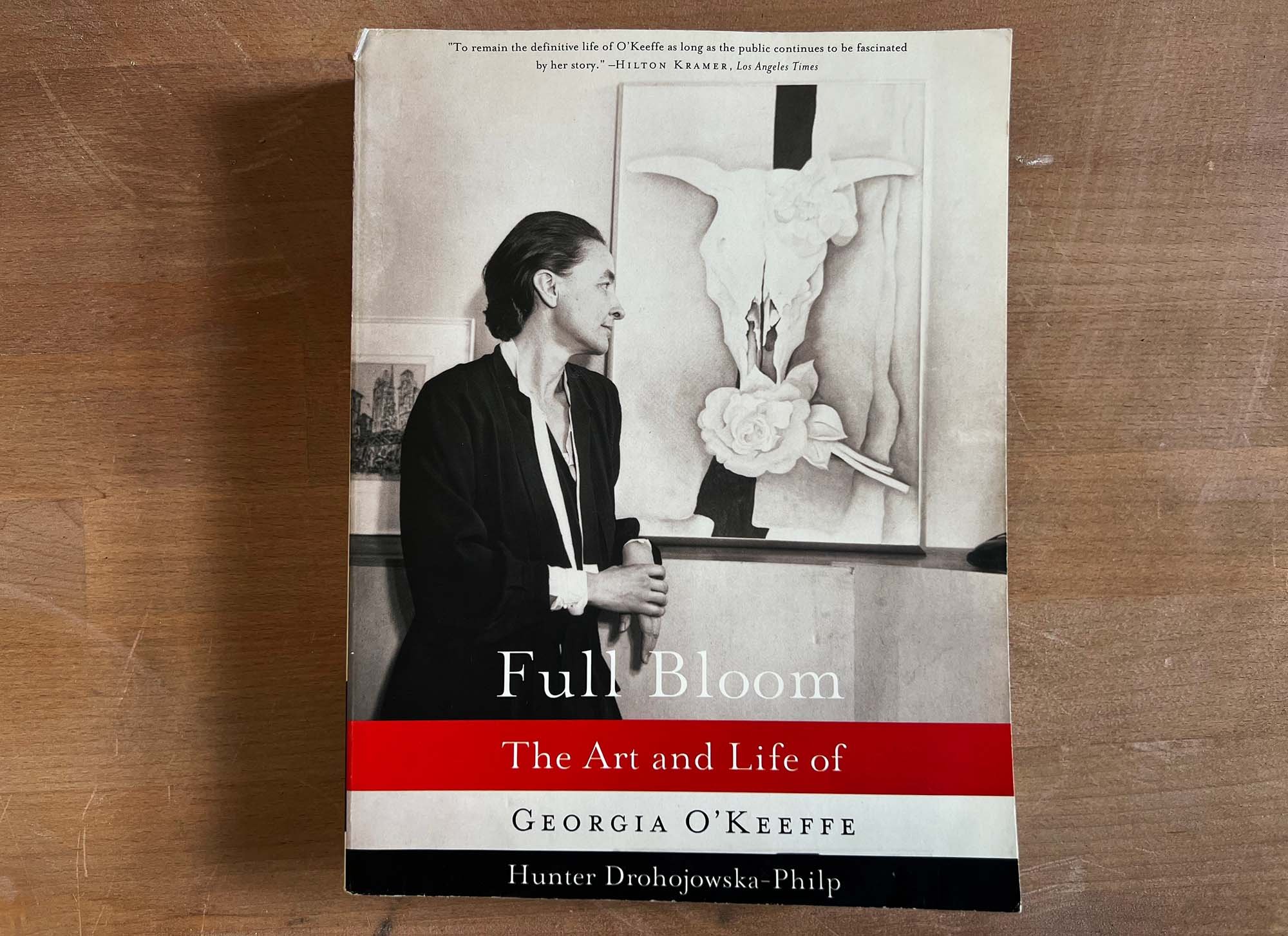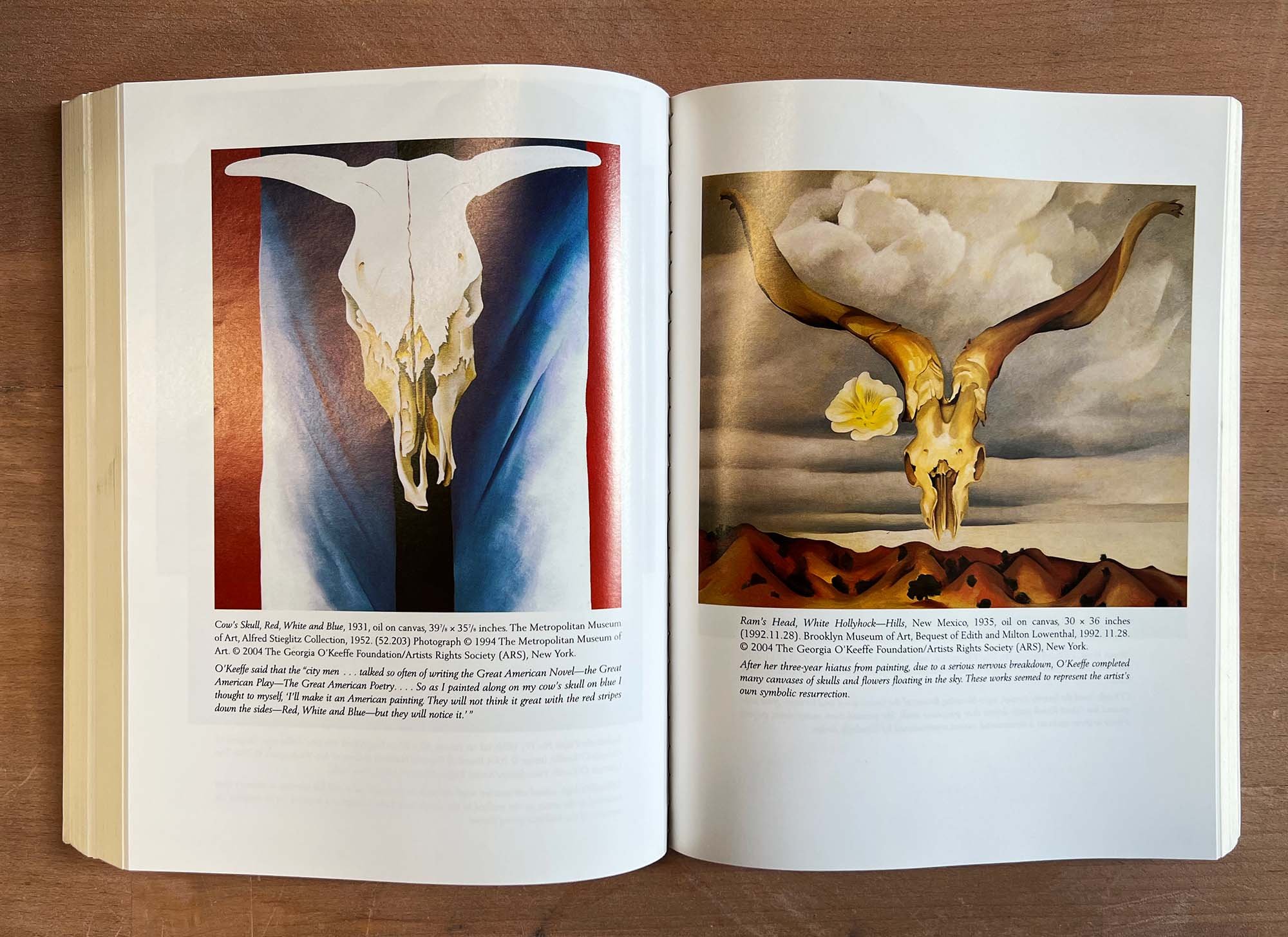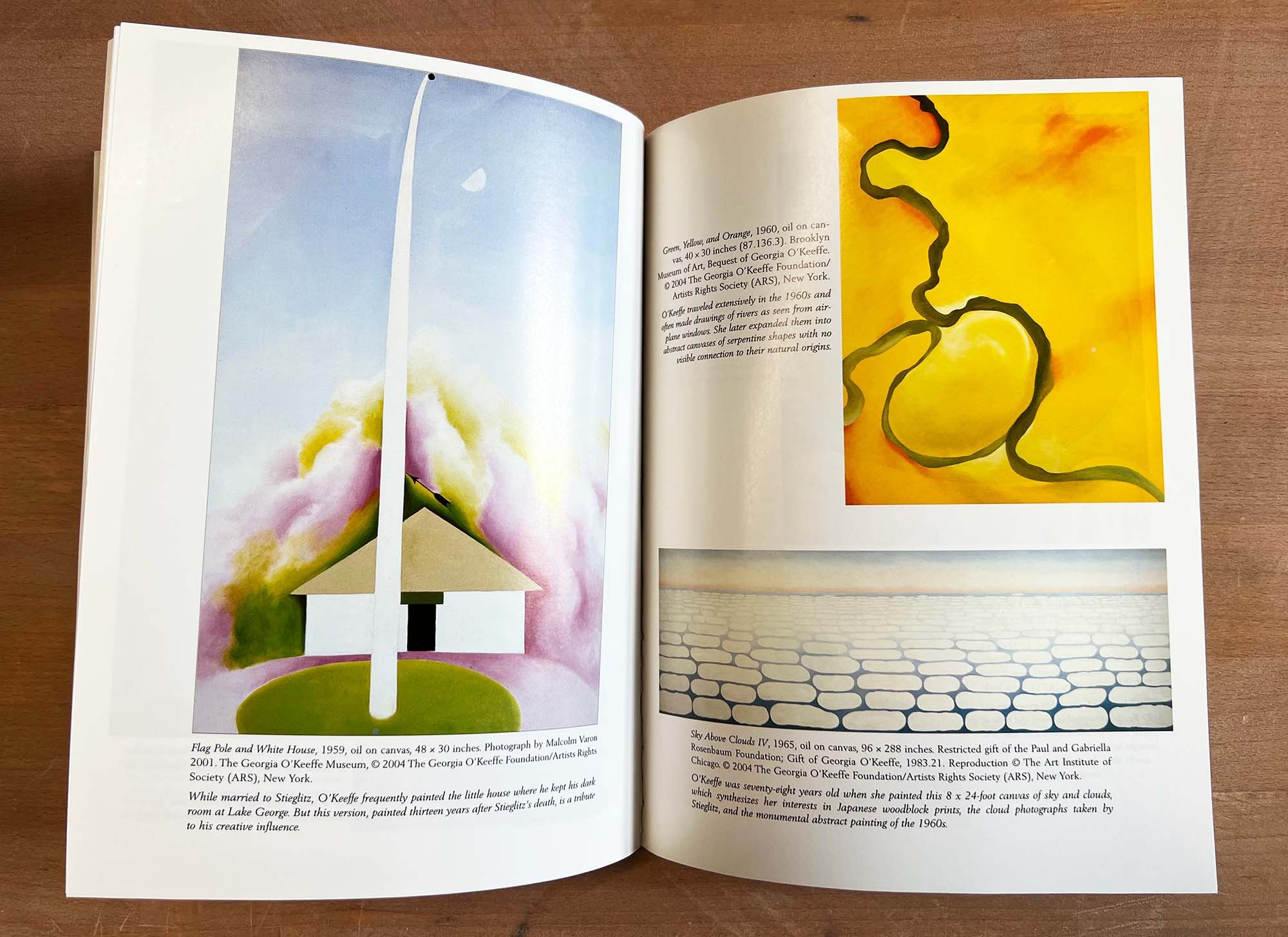Full Bloom:The Art and LIfe of Georgia O’Keeffe is a comprehensive 2004 biography of the artist by Hunter Drohojowska-Philp. Chronicling O’Keeffe’s entire life and career, the book traces the artist’s roots, relationships, and rise to becoming one of the most prominent and successful American artists of the 20th century. Known for her desert landscapes inspired by New Mexico and West Texas, O’Keeffe also spent many years in New York City and summers in upstate New York near Lake George.
The book is a fascinating insight into O’Keeffe, her art, and much of the 20th century American art scene. With around 550 pages of text, it’s a thorough, detailed biography and also includes numerous photographs and reproductions of paintings and drawings by O’Keeffe. Below are a few excerpts from the book.
Georgia O’Keeffe in 1974 on making ‘ordinary’ paintings
“The truth is I’ve been very lucky. Stieglitz was the most interesting center of energy in the art world just when I was trying to find my way. To have him get interested in me was a very good thing. My going to Texas was lucky, and, of course, my finding [Abiquiu]. And then, somehow, what I’ve painted happened to fit into the emotional life of my time… Often, I’ve had the feeling that I could have been a much better painter and had far less recognition. It’s just that what I do seems to move people today, in a way that I don’t understand at all. Now and then when I get an idea for a picture, I think, how ordinary. Why paint that old rock? Why not go for a walk instead. But then I realize that to someone else it may not seem ordinary.”
— from page 518
O’Keeffe on the 1931 painting Cow’s Skull, Red, White and Blue
Painting is pictured above at left.
“As I was working I thought of the city men I had been seeing in the East. They talked so often of writing the Great American Novel—the Great American Play—the Great American Poetry.
People wanted to “do” the American scene. I had gone back and forth across the country several times by then, and some of the current ideas about the American scene struck me as pretty ridiculous. To them, the American scene was a dilapidated house with a broken-down buckboard out front and a horse that looked like a skeleton. I knew American was very rich, very lush. Well, I started painting my skulls around this time…I had lived in cattle country—Amarillo was the crossroads of cattle shipping, and you could see the cattle coming in across the range for days at a time. For goodness’ sake, I thought, the people who talk about the American scene don’t know anything about it. So, in a way, that cow’s skull was my joke on the American scene, and it gave me pleasure to make it in red, white, and blue.
—from page 332
O’Keeffe on her reluctance to have a retrospective at MoMA in 1946:
“I must say to you again that I am very pleased and flattered that you wish to do the show for me. It makes me feel rather inadequate and wish that I were better. Stieglitz’s efforts for me have often made me feel that way too—The annoying thing about it is that I can not honestly say to myself that I could not have been better.
However—we need not go into that. But I do wish to say that if for any reason you wish to change your mind feel assured that it will be alright with me—For myself I feel no need of showing. As I sit out here in my dry lonely country I feel even less need for all those things that go with the city… When I say that for myself I do not need what showing at the Museum means—I should add that I think that what I have done is something rather unique in my time and that I am one of the few who gives our country any voice of its own—I claim no credit—it is only that I have seen with my own eye and that I couldn’t help seeing with my own eye—It may not be painting but it is something—and even if it is not something I do not feel bothered—I do not know why I am so indifferent.
— from page 413-414
O’Keeffe on flying in 1941
O’Keeffe’s massive painting Sky Above Clouds IV, from 1965, is depicted at the bottom right of the image above.
“It is breathtaking as one rises up over the world one has been living in—It is very handsome…like marvelous rug patterns of maybe “Abstract Paintings.” The world all simplified and beautiful and clear-cut in patterns like time and history will simplify and straighten out these times of ours.
What one sees from the air is so simple and beautiful I cannot help feeling that it would do something wonderful for the human race—rid it of much smallness and pettiness if more people flew.”
—from page 396
Full Bloom: The Art and Life of Georgia O’Keeffe
By Hunter Drohojowsk-Philp
633 pages, 2004, W.W. Norton & Company, Inc
The book is available new and used.































